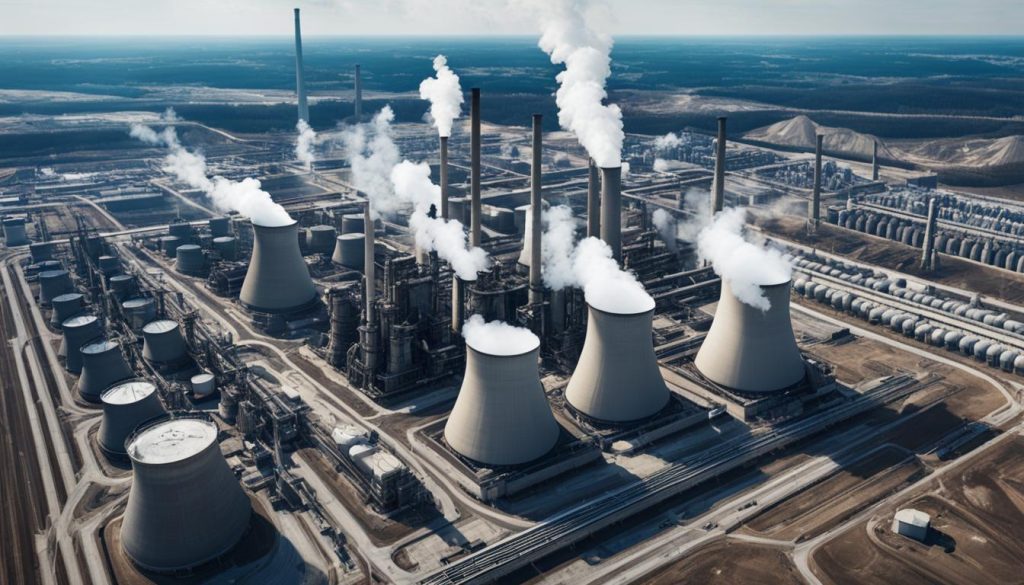
At its core, a power station is like a giant machine that takes energy from nature and transforms it into electricity for our homes and businesses. This is done by moving something—like steam, water, or wind—to turn a wheel called a turbine. The turbine spins another machine called a generator, which creates electricity.
How Does a Generator Work?
Inside a generator, there are two main parts:
- Coils of Wire: Thin wires wound into loops.
- Magnets: Large, strong magnets around or inside the coils.
When the turbine makes the coils of wire move near the magnets, something magical happens—electricity flows through the wires! This is because of a scientific principle called electromagnetic induction (discovered by Faraday).
You can think of it like this:
- Imagine dragging a magnet over a loop of wire. The motion “pushes” tiny particles (called electrons) inside the wire to move. This movement of electrons is what we call electricity!
Different Types of Power Stations
Now let’s talk about how these turbines are turned in big power stations. Each type uses a different natural energy source:
- Thermal Power Stations:
- They burn fuels like coal, oil, or gas to boil water.
- Boiling water creates steam, and this steam rushes through pipes to spin the turbine.
- Think of it like blowing on a pinwheel to make it spin, but here it’s hot steam.
- Hydropower Stations:
- They use the energy of moving water, like rivers or waterfalls.
- The force of the water pushes against the blades of the turbine, making it spin.
- Wind Power Stations:
- Large windmills (called wind turbines) capture the energy of the wind.
- As the wind turns the blades, they spin the turbine connected to the generator.
- Solar Power Stations:
- These work differently—they don’t always use turbines.
- Solar panels capture sunlight and directly convert it into electricity using special materials.
How Can You Build a Small Power Station?
Let’s build a small model together. Think of it as your own little power station!
Step 1: Materials You’ll Need
Here’s a simple list:
- A Small Motor: A DC motor from a toy or an old gadget. This will act as your generator.
- Blades for the Turbine: You can make these from cardboard, plastic, or even old bottle caps.
- Magnets: These help create the magnetic field inside the motor.
- Wires: To connect the motor to a small bulb or LED.
- Energy Source: Water flow, wind (like a fan), or even a spinning wheel.
Step 2: Building the Model
1. Preparing the Turbine:
- Attach your blades (like a pinwheel) to the shaft of the motor.
- Make sure they spin freely when pushed by air or water.
2. Connecting the Motor to a Load:
- Attach wires to the motor’s output terminals and connect them to an LED bulb.
- The bulb will light up when electricity flows!
3. Using Energy to Spin the Turbine:
- For wind: Place your turbine in front of a fan.
- For water: Hold the turbine under a faucet.
- As the blades turn, the motor inside generates electricity, lighting up the bulb!
Step 3: Enhancing Your Power Station
- Add a multimeter to measure how much voltage or current you’re producing.
- Experiment with different blade designs or angles to find what produces the most electricity.
Imagine This on a Larger Scale
In real power stations, everything is much bigger:
- Turbines: Huge wheels with blades as tall as buildings.
- Generators: Machines that weigh several tons, producing electricity for thousands of homes.
- Energy Sources: Large dams for water, massive wind farms, or endless rows of solar panels.
But the process remains the same: Energy moves something, which spins a turbine, which powers a generator to create electricity.
The Beauty of This System
Every time you turn on a light or charge your phone, you’re benefiting from this incredible process. It connects nature, science, and engineering in a beautiful way.



Recent Comments